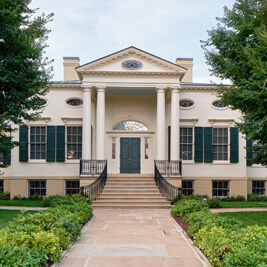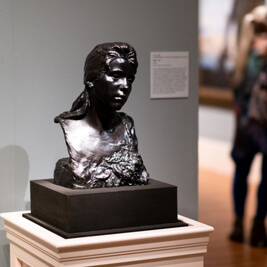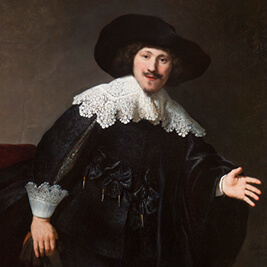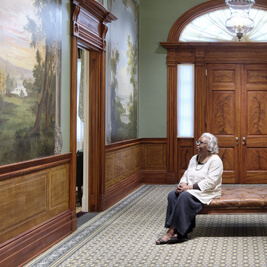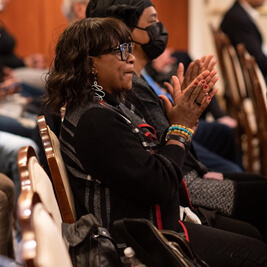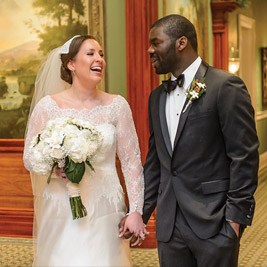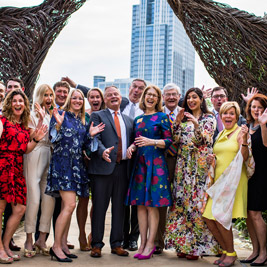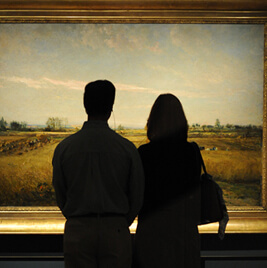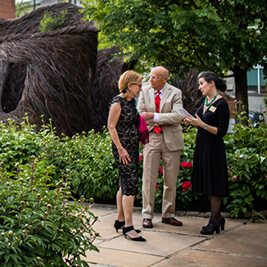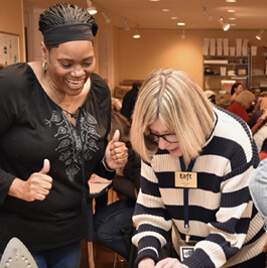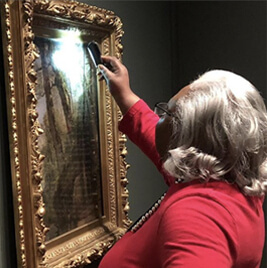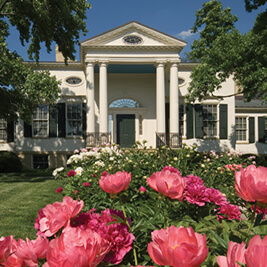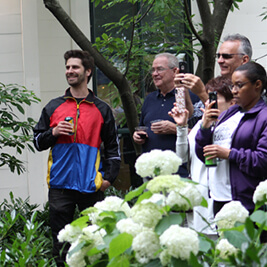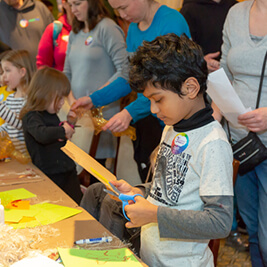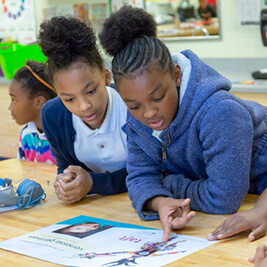- Do + See
- Dine + Host
- Give + Join
- Educate + Learn
Discover What's Coming Next
In addition to the Taft Museum of Art’s collection galleries, located in our historic house, guests can also enjoy special exhibitions in our Sinton Gallery and our Fifth Third Gallery. Discover our upcoming exhibitions and schedule a day to enjoy the museum.
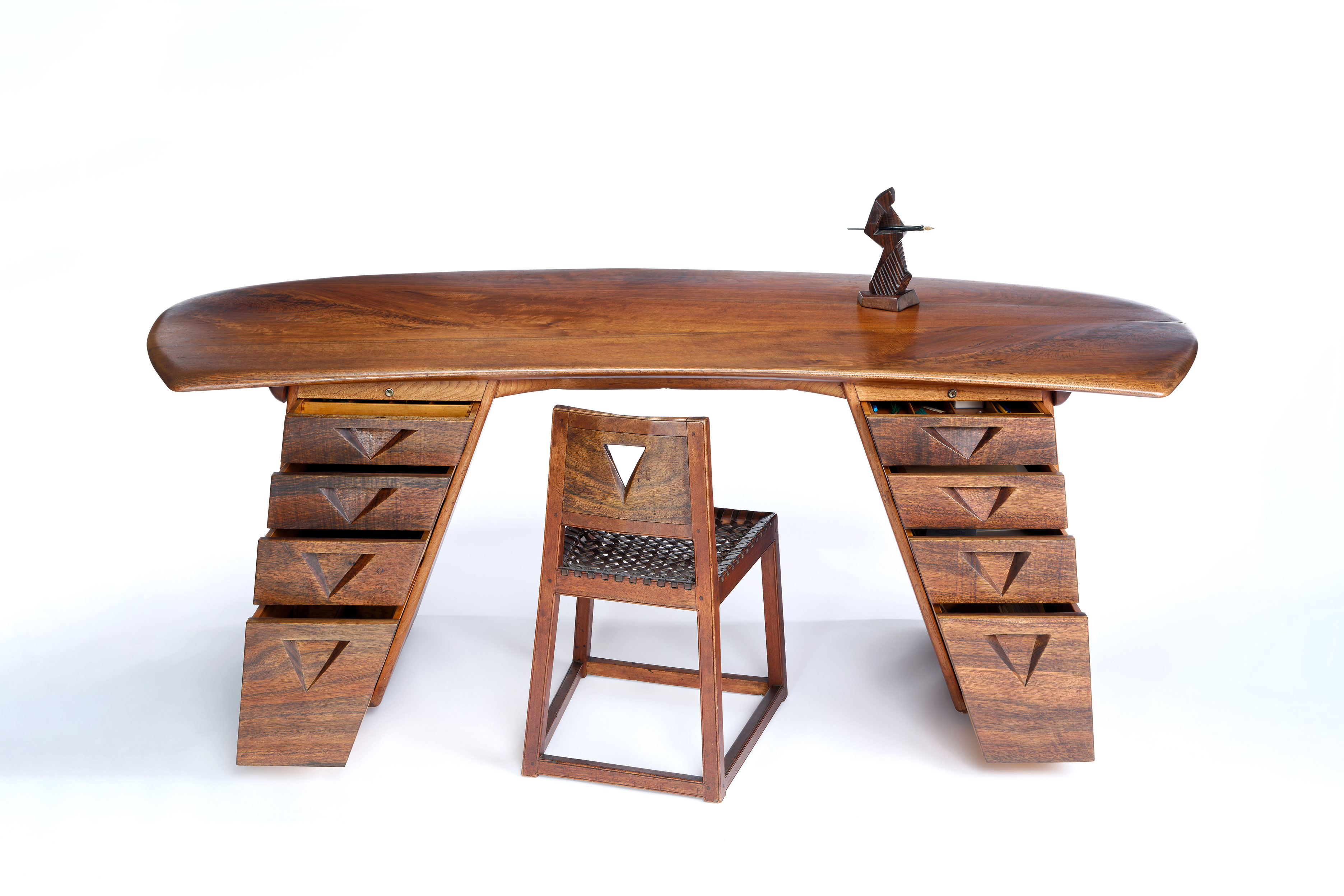
Wharton Esherick, Flat Top Desk, 1929 and 1962. Walnut and padouk, 28 x 82 x 36 in. Desk Chair, 1929. Walnut, padouk, laced leather seat, 28 x 18 x 18 in. Desk Figure, Bronze casting of 1929 Cocobolo original, 10 x 5 x 4 in. Wharton Esherick Museum Collection. Photo by Eoin O’Neill, courtesy of the Wharton Esherick Museum.
The Crafted World of Wharton Esherick
June 7–September 7, 2025 | Fifth Third Gallery
The Crafted World presents the innovative work of Wharton Esherick (1887–1970), the famed American artist best known as the father of the Studio Furniture Movement. Between 1926 and 1966, Esherick built his hillside home and studio in southeastern Pennsylvania. Now the Wharton Esherick Museum (WEM), it houses a treasury of work from seven decades of artistic practice. To share Esherick’s creative vision with contemporary audiences, The Crafted World draws on WEM’s rich and rarely loaned collection of over 3,000 works of art. Detailing the artist’s career from his early woodcut illustrations to his revolutionary reimagining of furniture forms as organic sculpture, the exhibition explores Esherick’s fascination with the natural world and intimate connection to its materials, his wry sense of humor, skillful design-thinking and problem-solving, interest in performance and the body, and enduring imaginative spirit.
The Crafted World of Wharton Esherick is co-organized by the Brandywine Museum of Art in Chadds Ford, Pennsylvania and the Wharton Esherick Museum in Malvern, Pennsylvania.
LEARN MORE
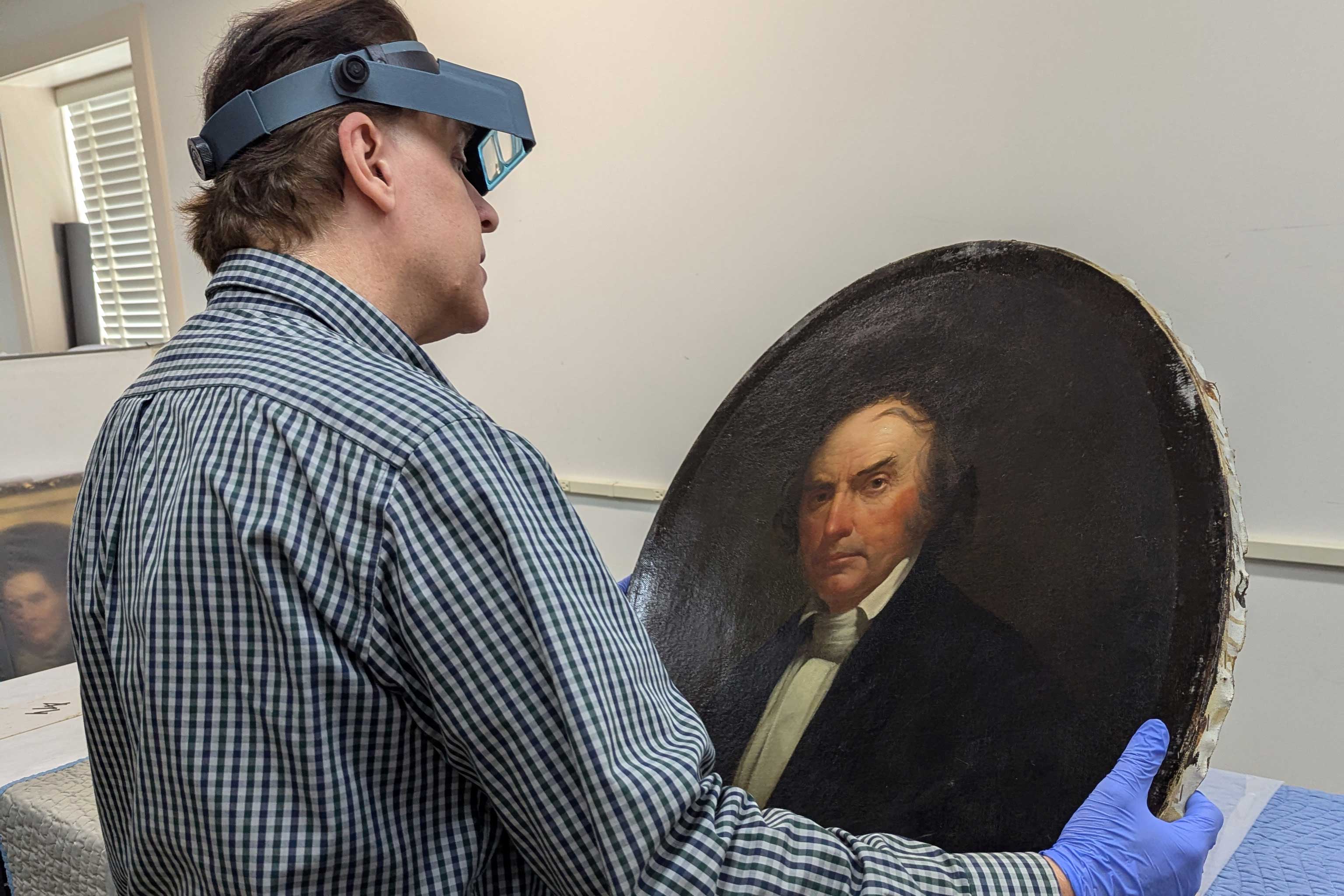
Conservation exam: : Paintings conservator Michael J. Ruzga of Fine Arts Conservation, Inc., examines the portrait of Nicholas Longworth out of its frame. Unknown artist, Nicholas Longworth, about 1857, oil on canvas. Taft Museum of Art, Gift of Emily Renshaw Pistilli, 2024.001
A New Look at the Longworths
June 28–November 2, 2026 | Sinton Gallery
A New Look at the Longworths unveils three recent gifts to the Taft Museum of Art: portraits of Nicholas and Susan Longworth—who lived in the Taft historic house for more than three decades beginning in 1830—and Nicholas’s sister, Catherine. The exhibition traces the paintings’ history within the family, highlights their conservation, and follows the quest to identify the artist who made them. It also shares new findings on Nicholas Longworth’s art patronage and his attitude toward abolition. Through these three paintings and other portraits from the Taft archives, A New Look at the Longworths sheds light on a family that helped shape Cincinnati as well as the museum that was once their home.
MORE INFORMATION COMING SOON!
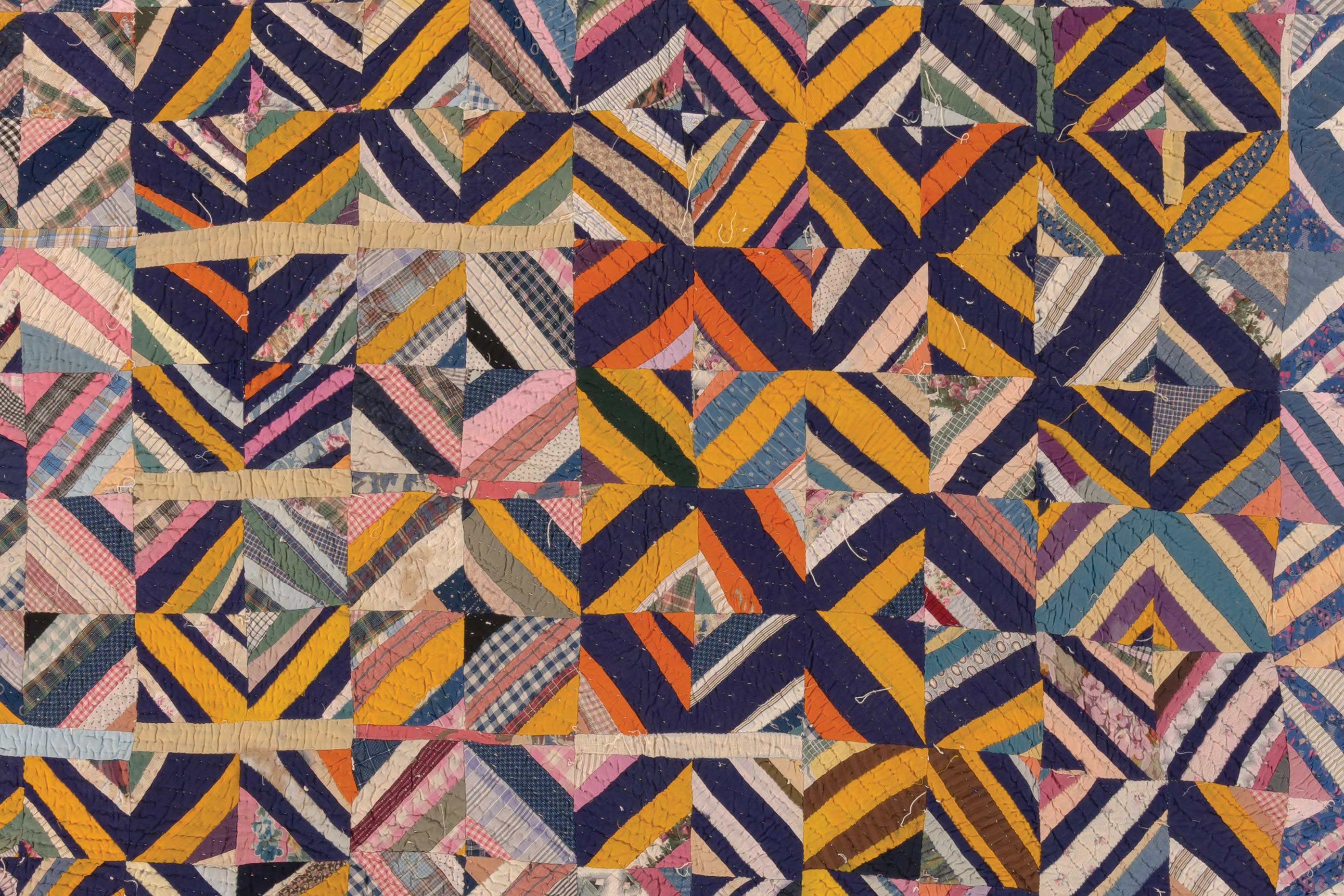
Rella Thompson (American), String Squares Quilt, detail, about 1925, Franklin County , North Carolina, hand-pieced cotton, 85 x 68 1/2 in. (216 x 174 cm). International Quilt Museum, University of Nebraska-Lincoln, Kathlyn F. Sullivan Collection, 2019.123.0001
Indigo and the Art of Quiltmaking
October 4, 2025–January 11, 2026 | Fifth Third Gallery
Explore the world’s fascination with the color blue. This exhibition presents twenty quilts created between the early 1800s and 2015 of fabric in shades ranging from pale sky to inky midnight. These dreamy blue hues come from indigo, an ancient pigment made from the leaves of plants in the genus Indigofera. Most natural dyes fade away relatively quickly, but indigo is colorfast—it may lighten over time but always remains blue. For thousands of years, people around the world have treasured textiles dyed with indigo. A synthetic version, developed in the 1880s, still colors today’s blue jeans. The quilts on view showcase a range of indigo dyeing techniques as well as the skill, design sensibility, and artistry of the women who made them. Indigo and the Art of Quiltmaking is organized by the International Quilt Museum, University of Nebraska-Lincoln, home to the largest public collection of quilts in the world.
